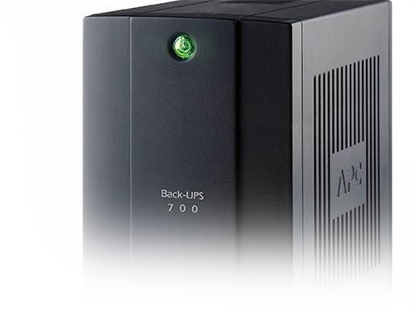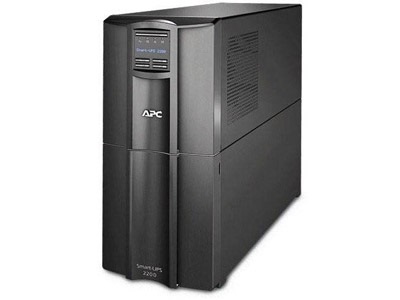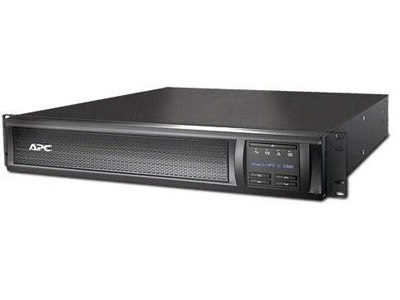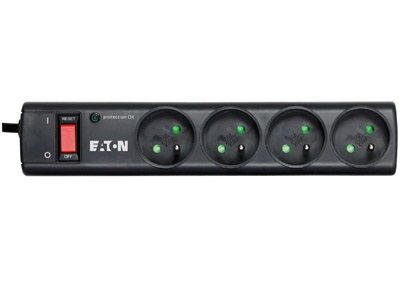How to Choose a Backup System?
A backup power system can save your data and hours of work. When an unexpected power failure occurs, it will give you plenty of time to store your work in progress. For home computers, a backup source is a useful addition, but for companies, its an indispensable tool. Here, we will advise you on how to select the right backup source to suit your needs.

Answer These Questions Before Choosing One:
Backup Source Guide
Basic Parameters of Backup Sources
Performance
Choose the power of your backup source according to the power used by the connected devices. For a home computer with accessories such as a webcam, an external sound card, etc., a backup power supply of up to 500W should suffice. If you need a backup source for an office or a business, you'll need to use a more powerful model.
Backup Time
Reserve power time is the amount of time your device stays powered. It mostly depends on the capacity of the power system. If you want to use the backup source for tasks on a home computer, such as writing documents or processing pictures, a backup time of about 1 minute will probably be enough. You'll have enough time to save your work in progress and shut down your computer safely.
There are other power sources with backup times of up to 10 minutes for when you are working with more than one program simultaneously, and when you are afraid that you will not be able to save your work in time.
Output Sockets
The number of sockets depends on how many devices you plan to connect to it. Some UPS power systems have up to 10 sockets. The socket types should also be taken into consideration. The vast majority, however, offers classic European sockets.
Some backup systems also offer advanced protection options such as USB, data network protection, mobile network protection and other features. Choose the one that suits you best. If you only need to plug in a computer, a system with classic sockets is enough.
Additional Features
Backup systems also have many other features that differ from model to model. For example:
Types
Backup systems are divided into three basic types: offline, line-interactive and online. They differ in both their usage and features.
| Function | Offline | Line-Interactive | Onine |
|---|---|---|---|
| Usage | Home PCs, networks | Home PCs, workstations, networks | Large companies, high-demanding companies |
| Backup Battery | ✓ | ✓ | ✓ |
| Protection Against Fluctuations | ✓ | ✓ | ✓ |
| Protection Against Unexpected Voltage Drops | ✕ | ✓ | ✓ |
| Overvoltage Protection | ✕ | some | ✓ |
| Uninterrupted Current | some | some | ✓ |
Classic UPS
Conventional UPS power supplies often take the form of a tower or series of drawers. With their practical space-saving designs, you do not have to worry about where you can place them. These backup sources are created for home computers and smaller offices. Grid systems are more suitable for companies.
Important Parameters of Classic UPSs
Performance
Depending on the performance required, UPS power systems can be easily divided into:
Backup Time
The backup time for a UPS is stated at 50% at a 100% load. So you have to think about how many computers or other devices you plan to power. Normal backup time at a 100% load is around 5-10 minutes. At a 50% load, you'll have a backup time around 5 minutes more. This is ideal for both households and businesses. However, if you require continuous operation during power failures, look for an online UPS, which offers backup times exceeding 1 hour.
Frequently Asked Questions When Choosing a Classic UPS
Why buy a Tower UPS?
A Tower UPS is ideal for homes and small offices. If you only want to connect a few computers, a Tower UPS is a good choice. You can use it if you have a home music studio or if you are surfing the internet. You can also connect a camera, microphone and other accessories to the UPS.
Rackmount UPS
Rackmount UPS power systems are ideal for companies that have their own servers. You can place these backup power systems on a stand next to the servers. This type of system usually has several features and the models vary in price. They are fit for both young companies and market leaders.
The Most Important Parameters When Selecting a Rackmount UPS
Performance
Rack backup sources are designed to be used with servers and networks. They are not as suitable to use casually at home. Smaller companies generally choose power of up to 1000W, while larger companies go with higher performance. For more demanding users, there is an online UPS option that can offer power of up to 3000W.
Backup Time
The backup time for a UPS is stated at 50% and at a 100% load. Consider the number of computers and other devices that you plan to connect. At a 100% load, the backup time is about 5-10 minutes. At a 50% load, you can expect 5 more minutes. This is ideal for both households and businesses. However, if you require continuous operation during power failures, look for an online UPS, which offers backup times exceeding 1 hour.
Dimensions
Unlike UPS towers, the dimensions of the backup power source rack plays a key role. Each rack comes in a universal size, called rack units. The sizes of these slots are written as 1U, 2U, etc. You can buy rackmount UPSs in sizes 1U, 2U, or 3U and you have to select the model based on the rack size.
Frequently Asked Questions When Choosing a Rackmount UPS
When to choose a rackmount UPS over a Tower UPS?
It's better to get a rack backup system if you already own servers or plan to in the future. The advantage of a rackmount UPS is that you can simply link all parts of the network directly to the backup system.
A Tower UPS is great for an office when you only want to connect computers or audio and video equipment to the backup system.
Surge Protectors
Surge protectors are a very cheap form of protection for your computer and other devices. They do not provide any backup time, but they do protect connected electronic devices from damage. This comes in handy, for example, during storms when a lightning flash affect your fuses. You will lose your unsaved work, but your devices will remain safe.
The Most Important Parameters When Selecting Surge Protectors
Shock power capacity
The key parameter of surge protectors indicates how much it can protect against an energy shock. The higher the shock power capacity, the better your equipment is protected.
Types of Sockets with Surge Protection
Frequently Asked Questions When Choosing Surge Protectors
How do low cost surge protectors differ from expensive ones?
More expensive surge protectors usually offer an extra feature. This can be a power switch that saves you some energy, more power outlets, or higher power surge capacity.
Glossary - Backup Sources
Tower UPS
A Tower UPS is one type of backup power source. This type has a specific shape, which is similar to a small computer case. It's typically used in homes or smaller offices.
Rackmount UPS
A Rackmount UPS is a type of backup power source that is primarily designed for servers. It is placed in classic racks and is available mostly in sizes 1U-3U.
Rack Unit
A rack unit is exactly what it sounds like. The sizes come in server rack units. The units are marked as 1U, 2U, etc. - one unit, two units, etc.
Overvoltage
Overvoltage is voltage that has a greater frequency than normal. Such voltage is clearly not good for any electronics. You can buy surge protectors that will protect your devices from this.
Glossary


